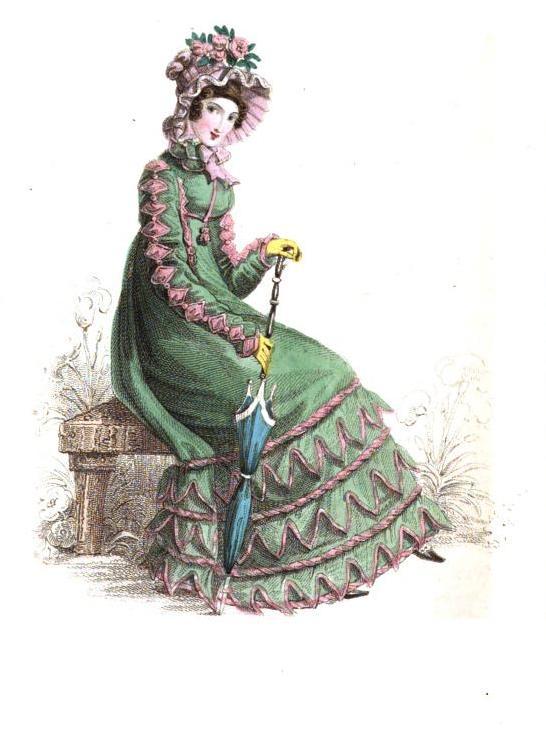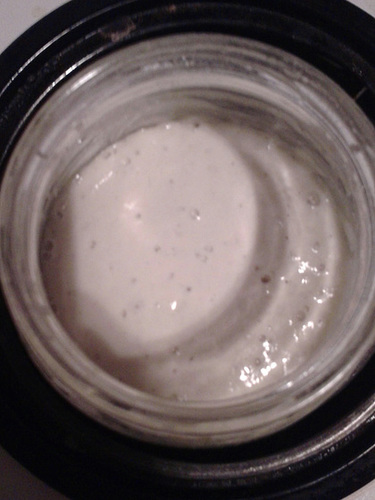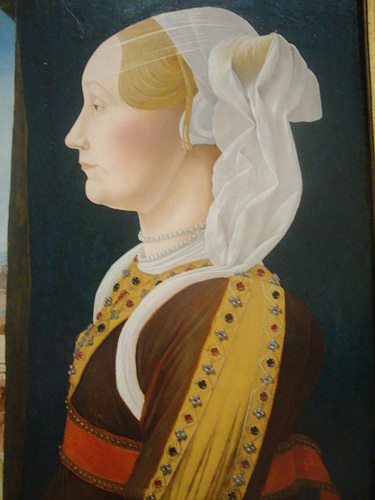
 The Challenge:
The Challenge: Generosity & Gratitude
Fabric: For the pink dress, wool and black velvet trims. For the plaid dress, polyester, linen, silk, and vintage black lace
Pattern:Story behind this one, but Kajani posted a wonderful 1861
pattern on her website that I used
Year: Early 1860's
Notions: Vintage lace, painted black buttons. For the pink wool dress, a bit of black braid, a lovely brooch.
How historically accurate is it? The plaid is probably about 80% period. I get major points off for the polyester but the point was to
recreate this dress and the plaid poly matched perfectly.
Hours to complete: umm...maybe 15 hours total for both dresses? I'm really not sure.
First worn: Hopefully, at Gettysburg on Nov 23rd for the plaid dress
Total cost: The lace was $19 for the lace I used and the lace I plan on using on the ball gown. Since I used maybe two yards of the 15 yards, I'm guessing only a couple of bucks. The plaid fabric was $4 a yard with only 3 2/3 yards of fabric left on the bolt! The wool, linen, and silk were all stash. Actually, the silk trim used on the plaid dress was all scraps.
More information:
With the 150th anniversary of Gettysburg coming up, I wanted to do only 1860's for this challenge. The problem? I've only done anything remotely 1860's once before - and that was a simple linen blouse with a wool skirt. This time, I wanted to recreate this
lovely dress I saw posted on ebay over the summer. The seller, Fiddybee, always sells amazing extant garments with decent pictures. Thanks to all the garments they have posted over the years, I've learned tons about the proper look for mid-Victorian garments.
However, I only had 3 2/3 yards of fabric for the plaid dress. So, I decided early on I'd make a pink wool dress out of whatever pattern I ended up with, play with that since I had a lot of yardage to play with with the wool, and then, once all the kinks were worked out, make the plaid dress. The pink dress pictured is before I added the trims but the color on that photo is better than some of the later ones.
I began going through blogs and trying to find out what I could on 1860's patterns. I knew, from the seam lines of the extant dress, what the pattern should look like but didn't want to just guess at shoulder angles, dart placement, ect. Most of the blogs I found either didn't mention a pattern or just used a Big 3 (Simplicity, McCall's, Butterick) pattern. I looked at the Big 3 patterns I had on hand and they all looked...baggy. Somehow, I saw a lot of individuals get beautiful results from those patterns. However, if I was going to have to edit a pattern, I thought, I minus well draft it myself!
That's when I saw Kajani's pattern. Her website is in Polish but that doesn't matter for many of the items she has posted. Besides, google translate is awesome. Thanks Google! She posted a pattern from an 1861 magazine called the "Domestic Wheel" (KÓŁKO DOMOWE in Polish). What I loved about the pattern she posted is that it's on a grid. Each square is 1 inch. It helped to figure out slope and size. Thank you, Kajani!
Immediately, I took my sidewalk chalk and copied the pattern on to some green poly fabric I had lying around.

In the photo, you can see the print out of the pattern by Kajani next to my chalk drawings. I then cut it out, and started on a mock up.
There were some minor challenges, but I ended up with a nice wool dress as a back up dress for Gettysburg. (It will be useful for tending campfires). To line the dress, I used methods I found from extant gowns posted to ebay over the years. Looking at both ebay photos and museum photos, I realized only silk gowns were fully lined - cotton and wool gowns typically had lined bodices and maybe a deep lined hem. Yay! No full lining for the wool dress.
Ginger, who knows a lot about the 1860's dress, was kind enough to also show me some examples, via photos and daguerreotypes, some examples of how clothing was really worn. She pointed out that some sort of collar was typically worn. I've settled on a off white lace collar with a bit of thin black velvet for a bow based off of the daguerreotypes she showed me on her
pinterest page. Thanks, Ginger!
Once the pink wool dress was done, I went on to work on the plaid dress. I had just enough fabric to make the skirt (two 60" widths by 43" length to go over the hoop skirt) and the bodice plus sleeves. In wanting to keep the dress as close to the original as possible (I couldn't do the bias sleeves due to yardage), I painted a few gold buttons I had black. The buttons had the correct design on them, but the wrong color.
The finished dress is heavy! Since the polyester is supposed to look like silk, I treated it like a silk dress - meaning it's fully lined in linen. Although cotton was commonly used to line dresses,
based on this extant green dress that is part of the Litchfield Historical Society's collection, linen was also still used. I always have a ton of linen on hand (SCA costumer!) so it made more sense for me to use it. Thank you to the Historical Society for providing the fabric information!
I also want to thank everyone who left kind comments on my livejournal page as I was slowly piecing everything together. :-) It's sometimes the comments that help you get through the sewing project!
















































